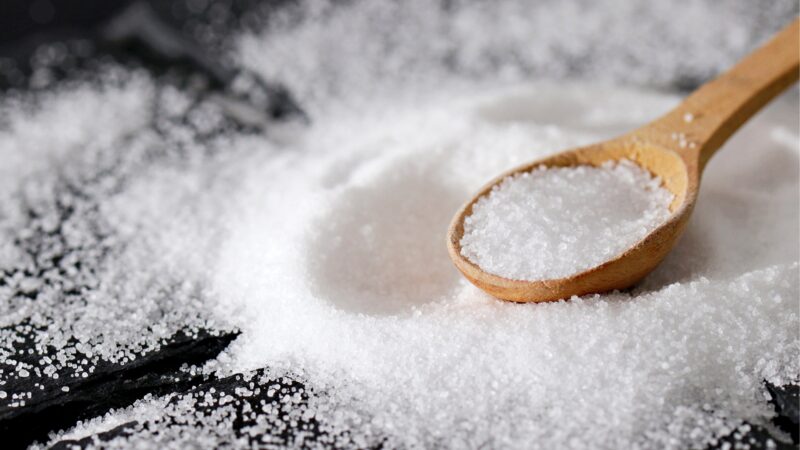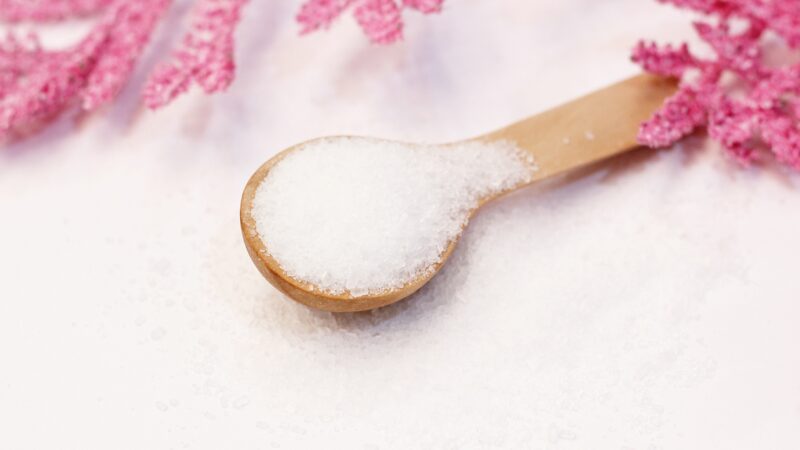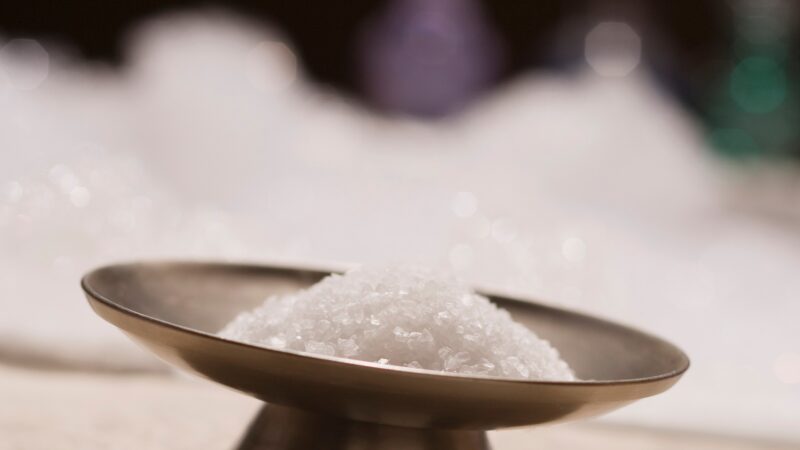Epsom salt, or magnesium sulfate, is a mineral salt composed of magnesium, sulfur, and oxygen. Although it is used in cosmetics and medicine, it is also widely used in gardening and agriculture.
Epsom salt is good for plants if it is incorporated in soil deficient in magnesium and/or sulfur. However, it is not effective for soil that already has sufficient amounts of these minerals. This may cause problems such as stunted overall growth, dark-colored foliage, and poor nutrient uptake.
To know more about Epsom salt, its benefits and drawbacks, what plants like and dislike it, how much and when to add it to the soil, and other interesting information, simply read this article further!
What Is Epsom Salt?

Epsom salt, otherwise known as magnesium sulfate (MgSO₄), is a white chemical salt in solid crystalline form. It was first extracted by boiling water found in a bitter saline spring.
Today, it is naturally acquired from dry lake beds and other water sources, but it can also be mixed scientifically by combining magnesia or magnesite with sulfuric acid.
It is primarily used as bath salts, medicine (an ingredient in pain relievers, muscle relaxers, and laxatives), and gardening. The Epsom salt used in cosmetics contains perfume, while the one used for plants does not.
Is Epsom Salt Good for Plants?
Epsom salt is good for plants, especially those that lack magnesium or sulfur in their soil. It also has less toxicity than commercial fertilizers, as long as you conduct a soil test before application and determine whether or not your soil truly needs more magnesium and/or sulfur.
Can Epsom Salt Be Used on All Plants?

Plants that grow in nutrient-poor soil conditions, such as carnivorous plants, will not tolerate Epsom salt. Hence, it should not be incorporated into their soil.
Does Epsom Salt Kill Plants?
Epsom salt kills plants if you use it on soil with enough magnesium and sulfur already. Too much can inhibit calcium uptake, which can cause blossom end rot in fruits, characterized by having dry, black, sunken portions on the plant.
What Does Epsom Salt Do for Plants?

Epsom salt contains magnesium, an essential nutrient involved in plants’ photosynthesis, energy metabolism, and plant respiration. Without magnesium, leaves will undergo chlorosis, stalks will weaken, and roots grow too long and branched.
How Much Epsom Salt Do I Add to My Soil for Plants?
It depends on the type of plant. Refer to the comprehensive guide below to know how much Epsom salt you should add:
| Plant | Amount of Epsom Salt | Amount of Water or Area |
| New seedlings | 1 cup | 100 square feet |
| Vegetable and flower gardens | 1 tablespoon | 1 gallon of water |
| Shrubs | 1 tablespoon | 9 square feet |
| Lawns, yards, and other landscapes with grass | 3 pounds | 1,250 square feet |
| Trees | 2 tablespoons | 9 square feet |
| Overwintering indoor plants | 1 teaspoon | 1 gallon of water |
How Often Should I Water Plants With Epsom Salts?
Regularly water once or every two months. However, if you are already diluting the Epsom salt in water beforehand, you do not need to follow up with additional watering. This is because Epsom salt is soluble in water and may not be able to stay long in the soil if you add more water to it.
What Plants Like Epsom Salts?
Tomatoes, pepper, hydrangeas, cucumbers, succulents, roses, lettuce, grass, legumes, rhododendrons, azaleas, evergreens, eggplants, squash, broccoli, and palm trees are some of the several plants that like Epsom salts. These plants have low to medium tolerance of low magnesium content in the soil, making Epsom salt beneficial for them.
What Plants Don’t Like Epsom Salt?
- Vegetable crops such as beets, beans, sweet potatoes, English peas, radish, and Swiss chard
- Carnivorous plants such as venus flytraps, pitcher plants, and sundews
- Tropical plants such as palms grown indoors, fiddle leaf figs, philodendrons, and alocasia
- Woody plants such as pine and coniferous trees
When Not to Use Epsom Salts in the Garden?

When your soil already has enough magnesium and/or sulfur content. If you add Epsom salts, you are increasing the amount of these minerals in your soil, causing problems such as dark-colored foliage, stunted overall growth, and problems in nutrient uptake, especially for calcium. This is why conducting a soil test before an application is important.
How to Use Epsom Salts on Plants?
Refer to the guide above to know how much Epsom salt to use depending on the type of plant. For Epsom salt diluted in water, you can apply it as a foliar spray to plant soil once a month.
You can also put them inside a tank sprayer if you wish to perform a broadcast treatment. Otherwise, incorporating over the root zone of plants can work just as fine.
Epsom Salt Myth vs. Fact
1. Epsom Salt is a Plant Fertilizer
It is considered more of a soil amendment since it does not provide the macronutrients—nitrogen, phosphorus, and potassium—present in fertilizers and are needed by plants to thrive. It only provides magnesium and sulfur.
2. Epsom Salt Solves All Gardening Problems
This is a myth because it only helps cure magnesium deficiency in the soil, but it will not solve any other problems related to gardening.
3. Epsom Salt Can Cure or Prevent Blossom End Rot
Blossom end rot is not caused by a deficiency in magnesium but is, instead, caused by calcium deficiency. Therefore, Epsom salt cannot cure nor prevent blossom end rot. Adding more magnesium to your soil can interfere with the plants’ calcium uptake, effectively worsening the blossom end rot.
4. Epsom Salt is a Miracle of the Earth
It does not increase plant growth, productivity, blossom, or fruit yield unless your plants are already deficient in magnesium. Overusing Epsom salt may even leach past the treated plant’s root zone and will not even be absorbed by the plant.
List of Sources
Magnesium for Field Crops – http://nmsp.cals.cornell.edu/publications/factsheets/factsheet59.pdf
Epsom salts – https://s3.wp.wsu.edu/uploads/sites/403/2015/03/epsom-salts.pdf